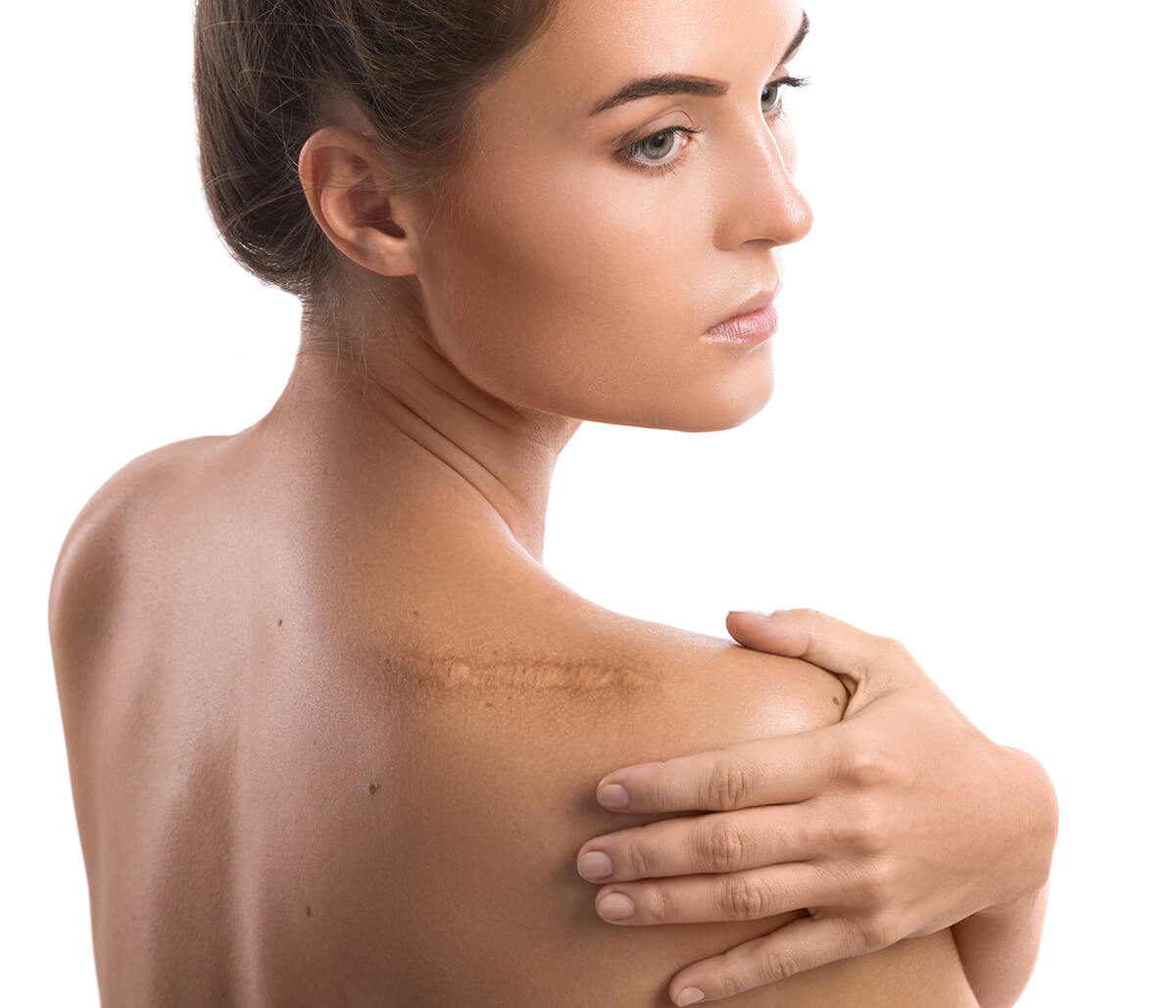
COVID-19 NOTICE : Safety measures implemented

09
Jul
Understanding Keloids, How They Can Be Treated and Who Is Most at Risk in Washington, DC

Do you face self-esteem issues due to the development of keloids on your body? If you suffer from keloids, you know that they can be hard to hide. Keloids can cause serious self- confidence and body image issues for those who have them. Dr. Cheryl Burgess and the team at the Center for Dermatology and Dermatologic Surgery in Washington, DC, offer scar and keloid removal procedures for patients in need.
Many people who do not suffer from keloids may have never heard of them or know what they are. A keloid develops from inflamed or broken skin. When the skin breaks for any reason (be it a cut, scrape, piercing, burn, etc.) that requires it to heal, collagen is produced. Keloids occur when collagen production goes a bit out of control, resulting in excess scar tissue that forms into a smooth, hard growth. These growths can grow many times larger than the size of the actual wound and most commonly surface on the back, chest, shoulders, cheeks and earlobes. Keloids are not limited to these parts of the body, however and can grow anywhere on the body. A keloid does not pose any health risk to the person affected but instead can create cosmetic concerns.
Who is at Risk for Keloids?
Not everybody that scars will have to deal with keloids. Both men and women can be susceptible to keloids, however, some are at a higher risk than others in developing keloids when they get a scar. If you fall under one of the following groups, then you are at a higher risk for keloid development.
- If you are of African, Asian or Hispanic descent: Keloids are more common in people who have a skin tone of darker pigmentation and celtic heritage. In the United States, this includes those of African, Asian, Hispanic or Celtic descent.
- Your family has a history of keloids: It has been found that about a third of those who develop keloids also have a first-degree blood relative who gets them as well. This includes a person’s mother, father, sister or brother. Percentages are higher for families that are of African or Asian descent.
- Ages between 10 and 30: You are at the highest risk of developing keloids between the age of 10 and 30. Most will see keloids starting in their 20s, but they can also occur earlier or later. Young children and the elderly are not particularly at risk of keloid development.
The Causes of Keloids

Most who develop keloids do so after injuring their skin, such as inflammation or from a puncture or cut. Even small punctures such as getting your ear pierced or skin tattooed can cause a keloid. Surgery is particularly risky for those who develop keloids including women who must have c-sections or a hysterectomy. Here are some other potential actions that could cause keloids.
- Some may develop keloids from acne scarring or chickenpox. It is even possible to get a keloid from an insect bite or a medicinal shot or vaccination.
- Some men who shave their faces who develop ingrown hairs can develop keloids in areas the beard grows.
- Spontaneous keloids are those that develop on skin that has been inflamed and not been punctured or injured. When these types of keloids form, they usually surface on the chest. People with a family history of keloids are most at risk for this form of spontaneous growth.
Keloid Symptoms
Keloids have certain characteristics that can be detected before they can fully form, including:
- They begin as a raised scar. The raised scar can be dark brown, pink, red or purple and appears as a raised scar with a flat surface. The color of the raised scar will begin to darken over time and will, in many cases, end up being darker than the color of the person’s skin.
- Keloids can feel differently with some feeling rubbery and hard.
- As keloids grow, they can cause painful or itching sensations or be tender to the touch. This discomfort is typical especially if the keloid is still actively growing.
- Keloids take time to form, typically taking anywhere from 3 months to a year before you see the signs of keloid development. From there it can take weeks or months for the keloid to fully form. Some may even take years to slowly grow.
Treatment
Keloids can be tough to treat. They can, when handled improperly, grow back and be more prominent than before. This makes it critically important to have a certified dermatologist that has experience in keloid treatment and removal handle your case. Dr. Cheryl Burgess and the team at the Center for Dermatology and Dermatologic Surgery in Washington, DC, have had much success in treating patients who come in with keloids. Dr. Burgess utilizes a carefully orchestrated program of cortisone injections and pressure therapy combined with laser therapy to treat and remove keloids.
If you suffer from keloids and are ready to pursue removal therapy, please reach out to the team at the Center for Dermatology and Dermatologic Surgery in Washington, DC, to learn more about how they can help you. To schedule an appointment, please call (202) 955-5757.
